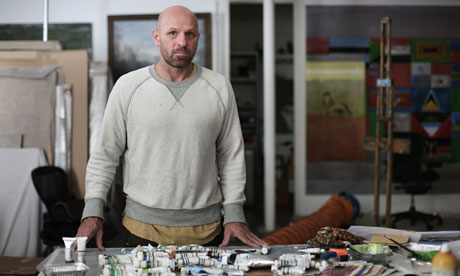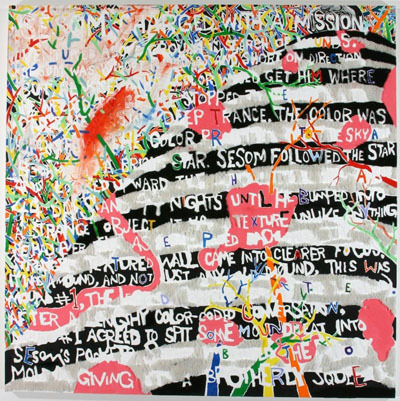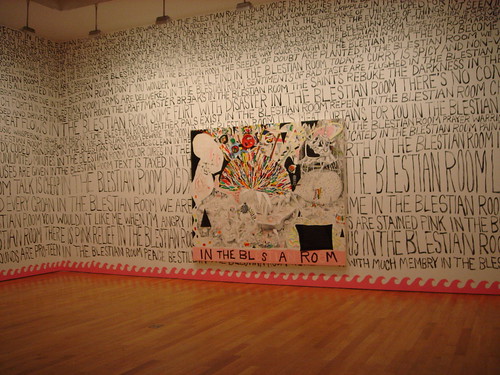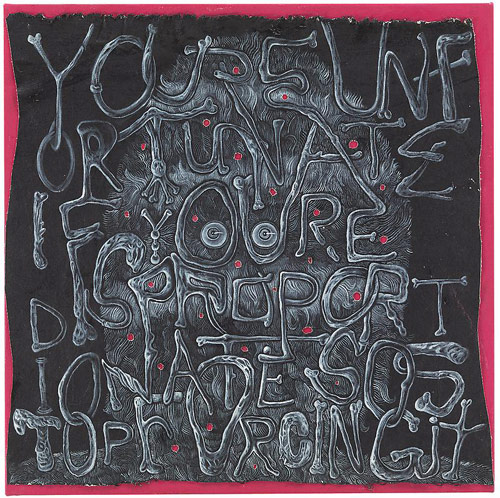This is pre-research for a presentation in my TA internship. So. Two birds, one stone!
Scottish Painter currently living in trinidad. Reknown figurative painter (which is odd since what i think of is beautiful multicolor landscapes). In 2007 broke the then-record for most expensive work sold by a living painter.
Born
Edinburgh, scotland. Moved to Trinidad while very young, and then to canada 4 years later.
"
He moved to London to study at the Wimbledon School of Art in 1979-1980, Saint Martin's School of Art (where he became friends with artist Billy Childish[3]), from 1980 to 1983, and Chelsea School of Art, in 1989-1990, where he received an MA.[4] "
Worked as a set dresser for the english natl opera.
did a residency in trinidad in 2000, and then moved back to live there in 2002, and set up a studio there. Became a prrof at the fine arts academy
n Düsseldorf, Germany-- 2005 to present.
much of his paintings are landscapes. draws insp from photographs, newspaper clippings, film stills, and art history (munch/german expressionism/impressionism/klimt). many works based on found photographs, but not photorealisti. In a 2008 interview, Doig referred to his use of photographs and postcards as painting "by proxy" and noted that his paintings "made no attempt to reflect setting."[9
shortly after getting his MA from chelsea, awarded prestigious whitechapel award = solo show in whitechapel art gallery in 1991. formative point in his career-- produced many large-format canvases which form matrix for current work. unbringing in canada reflected in his snowscapes. has quite a few connections to architecture, says "when you walk through the urban enviroment you take the strangeness of the architecture for granted."
unexpected angles, weird architecture, unusual (Beautifully bright) colors. "magic realist". many canoes in his work, as symbols of canada.
"
In 2003, Doig started a weekly film club called StudioFilmClub in his studio together with Trinidadian artist Che Lovelace. Doig not only selects and screens the films; he also paints the poster advertising the week's film. He told an interviewer that he finds this ongoing project liberating because it's "much more immediate" than his usual wor"
work aligns with a current movement-- metamodernism.
Everything above from the very-well-cited wikipedia article.
"Themes of magical realism stream through Peter Doig’s work, capturing timeless moments of perfect tranquillity, where photo-album memory flits in and out of waking dream. Drawing from his Canadian childhood, and one of the spookier scenes from Friday the 13th, Peter Doig’s canoes have become a seminal image in his work; their reflection in the water, like a double life, is a fantasy mirror to the unknown."
07; canoe lake
91, the architct's home in the ravine
95-96, white creep
90-91, whtie canoe
this is the one that broke the record.
he'd led it go for 1000 pounds.
95-96, orange sunshine
1994, concerete cabin
"Peter Doig’s paintings of Le Corbusier’s classic modernist apartment block offer a mysterious Utopia: cosmopolitan dream architecture nestled in (or imprisoned by) tangling wilderness. In Concrete Cabin, it’s the nowhereness of the scene which is strangely uncanny: the bright minimalist grid of the building beaconing through the dark shadows of the trees; an everyday glimpse from a suburban sidewalk twisted into something magical; a set from a contemporary fable. Peter Doig paints this scene with chimerical effect; cropping the image to exclude ground or sky, it has no physical orientation or weight, only the intangible presence of a fleeting moment."
"Peter Doig's paintings have a tendency to disorientate us, even when they depict recognisable imagery such as figures and buildings. We are often plunged into an unreliable world of reflections, sometimes literally when we are presented with the icy lakes and watery depths that feature in paintings such as Swamped, 1990, and Window Pane, 1993, but more often in a metaphorical sense - the mirror image of memory or fantasy. Doig invites us to consider the status of the people, places and events that populate his pictures, whether they exist in private or public realms, in personal or shared experiences. The refuges and defences against nature often seen in Doig's work are a kind of visual corollary for such considerations. We might also see in them an artist measuring the gaps between thought and language, painting as an individual pursuit and a shared experience. "
Lapeyrouse Wall, 2004
girl in white with trees, 01-02
country rock, 98-99
this is a specific tunnel in Toronto canada, in the don valley parkway. anon artist painted a rainbow on it, and that rinabow has been repainted despite being covered from the authorities more than 40 times.
reflection (what does your soul look like) 96
window pane, 93
bomb island, 91
when asked what's important to paint, what makes a valid painting, what's a fair subject for a painting, what's a valid emotion to exploit in a painting
"i paint landscapes, sometimes with figures in them. i think that's all that's important to know, really, until you see the paintings."
"Can you make a painting like that that isn't totally sugary or saccherine that doesn't make you feel ill-- that's what i was trying to do with these painting."
one of his diptichs start as one panel-- based on a newspaper clipping, turned into two panel; trying tro reference impressionist painters that he'd seen before. trying to amek a painting that trasncended kitcsh, transcended notions of kticsh.
paintings made as one offs, but as time goes on they seem to fit more into a group-- "That just seems how hi work, really""create an environment, attracted to the contrast between the built and the natural."
considers some paintings-- such as the boy looking at his reflection (Blotter)-- as very banal. there's no action. that's what attracted him. how do you make a still painting.. sould be some action, some activity, but the action's all in [his] head, and then in your head [as a viewer]. "in london there's no ladnscape-- everything is grey. but in trinidad, everything is bright-- literally bright on the street.
in trinidad there's no real cinema that shows anything other than hollywood/bollywood films.
“I’m just one of those people who don’t feel they’re from anywhere,” he says with a smile. Yet a sense of place and the issue of where the individual is from, or – more importantly – where they think they’re from, are he admits, “definitely questions in my work”.
At a time when painting appeared increasingly irrelevant to the mainstream of contemporary art, here was an artist whose enigmatic images of abandoned houses, frozen forests and lone figures in canoes seemed to champion traditional painterly values – colour, texture, space – while bringing to them a sense of unease that feels very much of our time.
“You try to create scenarios and atmospheres in your paintings,” Doig says, referring to himself in a self-deprecating second person. “I don’t set out to be deliberately sinister, but I always wanted to make paintings that told stories and suggested things.”
Quietly spoken, Doig appears at once shy and commanding, speaking in flurries of words and ideas, punctuated by hesitant pauses, apologising frequently for taking the conversation off at tangents, while exuding a sense of inner sureness about the value of what he does.
Doig’s Edinburgh exhibition comprises all the paintings he has completed during 11 years in Trinidad, images defined by lush vegetation and rich tropical colour, referring to the island’s colonial past and diverse spiritual traditions and imbued with an obscure sense of threat. One of the most memorable, Dark Child, is inspired by Doig’s four-year-old daughter’s brief disappearance in the Trinidadian jungle – “the most terrifying 45 minutes of my life,” he says.
After a foundation course at Wimbledon School of Art, he did a painting degree at St Martin’s, where he reacted against the prevailing lyrical abstraction, thinking of himself as a Pop Art-inspired urban narrative artist. Yet he didn’t immediately find his creative path.
When you’ve never made any money from your work, and someone buys a painting for £1,000, that feels like an incredible amount of money. But the whole thing of attaching value to paintings, I haven’t really come to terms with that. When I’m working I never think about how much the things will eventually be worth. That would be a disaster.”
Taking initial inspiration from photographs – sometimes his own, but more often found images that intrigue him – or from drawings, but never working directly from life, Doig works slowly. An initial burst of enthusiasm gives way to doubt, with the image endlessly revised, the thinned-down oil paint scraped off and reapplied, resulting in intriguing, often beautiful textures and surfaces, which are only resolved when a deadline is looming.
"Entering a doig exhibition is like falling into a dream."
"a sense of in-between"
ski jackets
Gasthof zur , 2000



















































